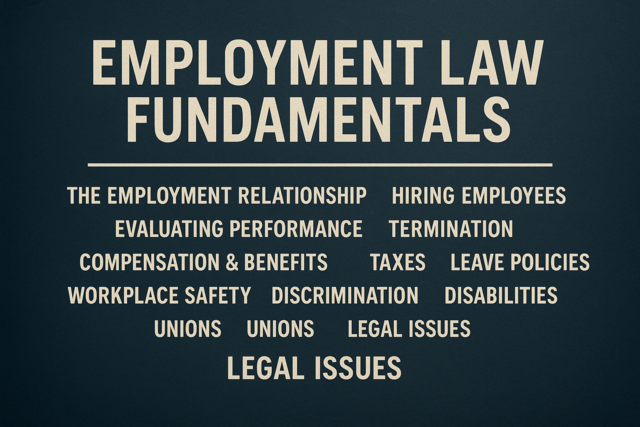I. OBJECTIVES
- Be familiar with ratio and trend analyses
- Introduction to the DuPont Analysis
- Be familiar with the types of ratios and their importance
- Know when, why, and how to use various types of ratios and what information each generates
- Know the effect inflation has on ratio analysis
Financial ratios are used to evaluate and weigh the performance and operations of the firm. They are analyzed using comparative analysis of industry averages, such as comparing similar companies' same sector gains and comparative valuations. Ratios are also analyzed using trend analyses, which examine the firm's ratios as a function of time.
It is important to know what is being measured to construct a ratio that accurately allows the resultant number to be understood in its context.
Line items in financial statements (Income Statement, Balance Sheet, and Statement of Cash Flows) provide the information for the ratio analysis. That is, the ratio or combined ratios of one or several items to another are calculated, giving a result that might be used to evaluate a firm's operating and financial performance, including the following:
- Efficiency
- Liquidity
- Profitability
- Solvency
TREND ANALYSIS
It must be considered that, over the course of a business cycle, profitability and sales trend, expanding or contracting, resulting in the ratio analysis for any one year is not a fully accurate picture of the firm's overall financial health. Trend analysis should be followed over a number of years, and comparatively within the industry, to get a more accurate idea of company growth, operations, profit, and stability.
Profitability ratios show the combined effects of operating decisions that have a resultant impact on the firm's:
- Liquidity (return on sales)
- Asset management (total assets)
- Debt management (returns on invested capital)
It accounts for income generated for every dollar spent. Efficiency, minus allocated and utilized resources, directly affects the firm's profitability success, problems, and/or failure.
PROFIT MARGIN
Gross profit is what remains after the cost of goods sold have been subtracted from the net sales.
The gross profit margin is a measure of profitability, which shows income and outgo of money flows. For example: Sales equals income, and the Cost of Goods equals outgo.
The gross profit margin should not drastically fluctuate from one period to another. The exception is when the firm or industry is undergoing changes that affect the cost of goods sold, or pricing or costs change.
Gross Income
GROSS PROFIT MARGIN = Sales
RETURN ON INVESTMENTS (ROI)
The Return on Investment (ROI) measures the relationship between the profits the firm generates and assets that are being used. Essentially the ROI is the return on the owner's investment. The ROI should minimally be equal to the same return it would gain from being invested in a risk free account, such as a Certificate of Deposit.
ROI = Net Income (profits)
Total Assets (shareholder's investment)
RETURN ON EQUITY (ROE)
The shareholder's equity does not include preferred shares.
Net Income
ROE = Stockholders' Equity
B. The DuPont AnalysisThe DuPont system is a profitability performance measurement method (initiated by the DuPont Corporation). It shows how the profit margin on sales, the total asset turnover ratio, and the use of debt, collaborate to influence the rate of return on equity (ROE). This process is the "DuPont identity."
According to the DuPont analysis, the ROE is affected by the following:
- Operating management
- Asset management
- Capital structure
Operating efficiency is a measure of profit margin.
The total asset turnover ratio measures asset use, efficiency, and management.
The equity multiplier measures the degree of financial advantage and capital structure.
Avoidance in new asset investing tends to occur when financial accounting depreciation methods generate erroneous ROEs during the first few years the asset is put into service. The DuPont method attempts to remove the temptation to avoid investing in new assets by measuring them at their gross book value, instead of at their net book value. It is believed this produces a higher return on equity (ROE).
THE DUPONT FORMULA AND CHART
The DuPont Formula is a more complex ROE formula used to monitor changes in the return on equity over time. The DuPont Formula shows how changes to net profit margin, asset turnover, and financial advantage affect the return on equity. Essentially, the DuPont Formula shows the interrelationships between crucial financial ratios. If the ROE is inadequate, the DuPont analysis can assist in locating the under performing area of the company. Different formulas may be used; some examples follow:
1) ROE = Net Profit Margin x Return on Equity
or
2) ROE = Net Profit Margin x Asset Turnover x Financial Leverage or Equity Multiplier
Either formula indicates which company processes are efficient and which need to be targeted for improvement. The ROE also represents the profitability of funds invested by the firm.
SAMPLE DuPont Chart
Liquidity is the firm's ability to pay its short-term obligations as they come due. How much liquidity the firm needs is determined by the current assets, or working capital, required for daily operations, to satisfy short-term obligations, or current liabilities.
How much liquidity the firm needs is determined by its operating cycle, or the time between the cash invested in goods and services, and when a return on the invested cash is realized.
Common liquidity ratios used to determine the firm's ability to pay its creditors are as follows:
- The current ratio
- The quick ratio
- The operating cash flow ratio
Typically, the higher the ratio value, the greater the probability the firm will cover its short-term debt.
CURRENT RATIO (Liquidity Ratio)
The Current Ratio is used to determine the firm's ability to pay back its short-term debt and payables (liabilities) with its short-term cash, inventory, and receivables (assets). A high current ratio indicates the firm's ability to repay its short-term obligations.
CURRENT RATIO = Current Liabilities
The Quick Ratio calculates assets minus inventories, divided by current liabilities (short-term debt obligations). Inventories are the least liquid of a firm's current assets, and that will incur a loss if the firm has to liquidate its assets. Therefore, liquidity (the ability to repay short-term debt) does not rely on the sale of inventories in the event of a financial emergency.
Asset utilization (activity or turnover) ratios show how the firm uses its assets to gain profit and revenue.
ACCOUNTS RECEIVABLE TURNOVER
The Accounts Receivables Turnover ratio shows how well the firm's receivables are being converted into cash. It compares the accounts receivable turnover and the average collection period (typically one calendar year). The higher the ratio, the more efficiently the firm is managing its available assets.
INVENTORY TURNOVER
Inventory Turnover ratios become important when there is an excess of inventory that is restricting cash flow, reducing opportunities for profit, and increasing costs for storage. The firm's current inventory and its average turnover rate will be examined prior to lending money.
Sales
INVENTORY TURNOVER = Inventory
The operating cycle (number of days its takes to convert inventory and receivables to cash) should be calculated to determine how long inventory has been idle and costing the company money.
TOTAL ASSET TURNOVER
The Total Asset Turnover ratio can indicate if the firm is utilizing all of its total assets efficiently to obtain sales revenue. A low ratio may indicate that not so many assets should be invested, compared to the (low number of) sales being generated.
FIXED ASSET TURNOVER
The Fixed Asset Turnover ratio indicates the firm's ability to effectively invest assets to generate sales.
Debt Utilization ratios give an indication about the firm's solvency, or its ability to pay its long term debt. Financial leverage (advantage) refers to the size of the debt and the firm's capital structure, which adds interest debt, used to pay it. A firm cannot pay its debts without earning a profit. Excessive debt or indication of financial instability complicates borrowing funds or borrowing funds at lower rates.
DEBT RATIO
The Debt Ratio measures the extent of a firm's leverage (size of debt and capital structure). The higher the debt ratio, the more leveraged the company is and therefore, the greater the risk to the investor.
DEBT RATIO = Total Debt
Total Assets
DEBT/EQUITY RATIO
The Times Interest Earned (TIE), or Interest Coverage, ratio is a "safety margin." It is used to calculate the number of times the firm's before-tax earnings will cover the interest. It indicates the firm's reduction in earnings tolerance.
TIE = Income Before Taxes (EBIT)
Interest Expense
III. The Impact of Inflation on Ratio AnalysisInflation is a general increase in the prices paid for goods and services. Deflation is the general decrease in prices paid for goods and services. However, not all item prices change at the same rate. In an inflationary environment, as prices rise, profits support themselves. When price increases begin to moderate, or deflate, expensive inventory begins to be charged against moderating retail prices.
Changing price levels distort the accuracy of financial statements. Inflation or deflation, in addition to other sources that ultimately impact financial data, and statements and the decisions made using them, should be calculated and analyzed prior to, during, or following financial ratio computations.
Ratio comparisons and ratio analyses are less reliable when based on financial statements that are adjusted for inflation. As a result, the following situations need to be recognized:
- Fixed asset values tend to be understated.
- Inventories tend to be understated (particularly if LIFO {last-in-first-out} is used).
- Increased interest rates lower outstanding long-term debt.
- Inventory charged to the cost of goods sold based on FIFO (first-in-first-out) will severely affect year-to-year variations in profit because of yearly changes in inflation.
Inflation causes stated profit outcomes to be inaccurate.
3. Supplementary five-year comparisons of operating revenues, net income, and cash dividends per common share should be restated in constant dollars to determine what portion of growth is attributed to real economic growth and how much is a result of inflation.
4. Historically, investors may be less willing to invest in stocks, bonds, and other financial assets. Stocks and bonds do better during disinflation than tangible real assets, such as gold, silver, and other precious metals.
5. Inflation accounting and restating financial statements in constant dollars can reveal weaknesses and mitigate distortions, but it will not eliminate the overall problem.
Industries producing cyclical products are the most susceptible to inflation-induced profits. They include the following:
- Lumber
- Food products
- Inventory that comprises significant percent-of-sales and profit





























